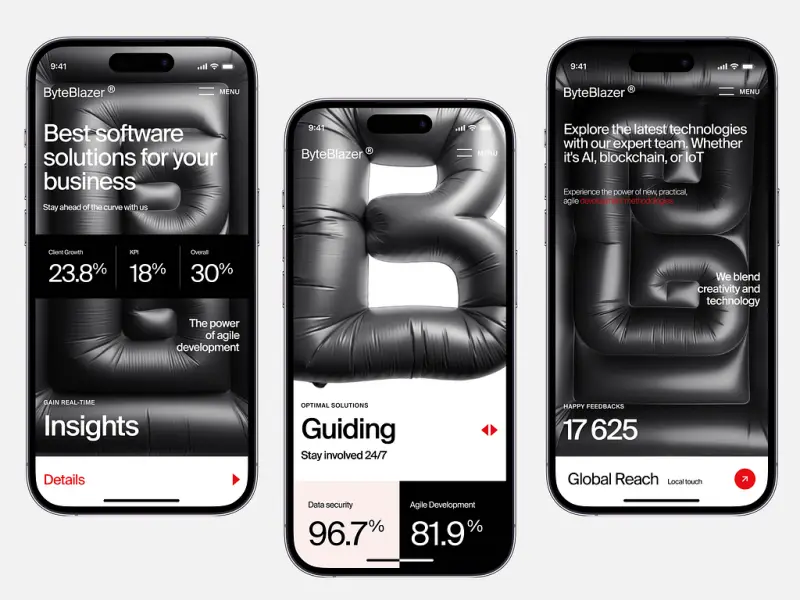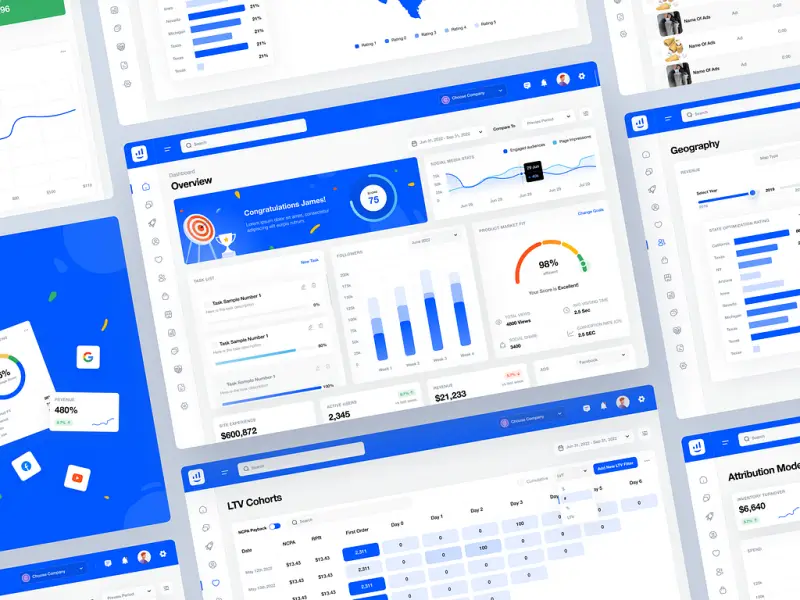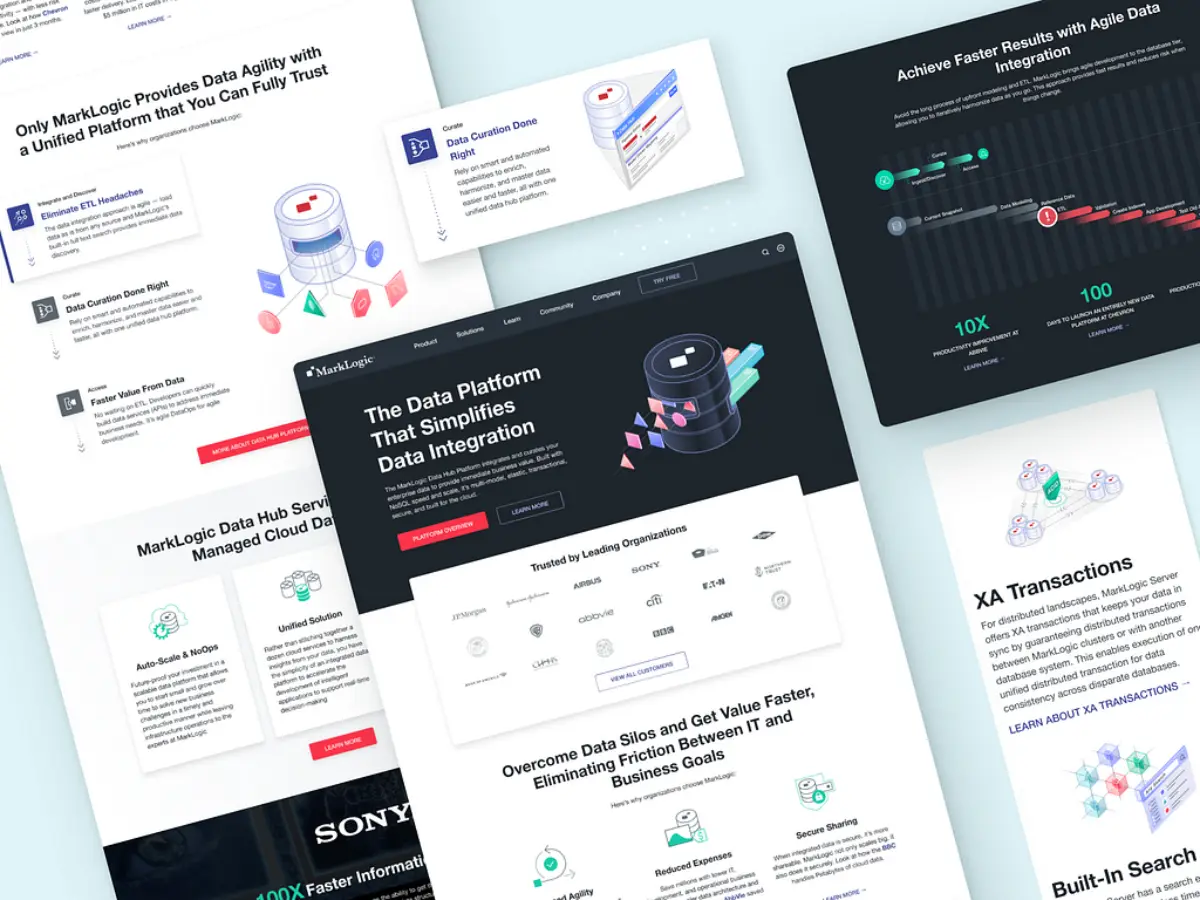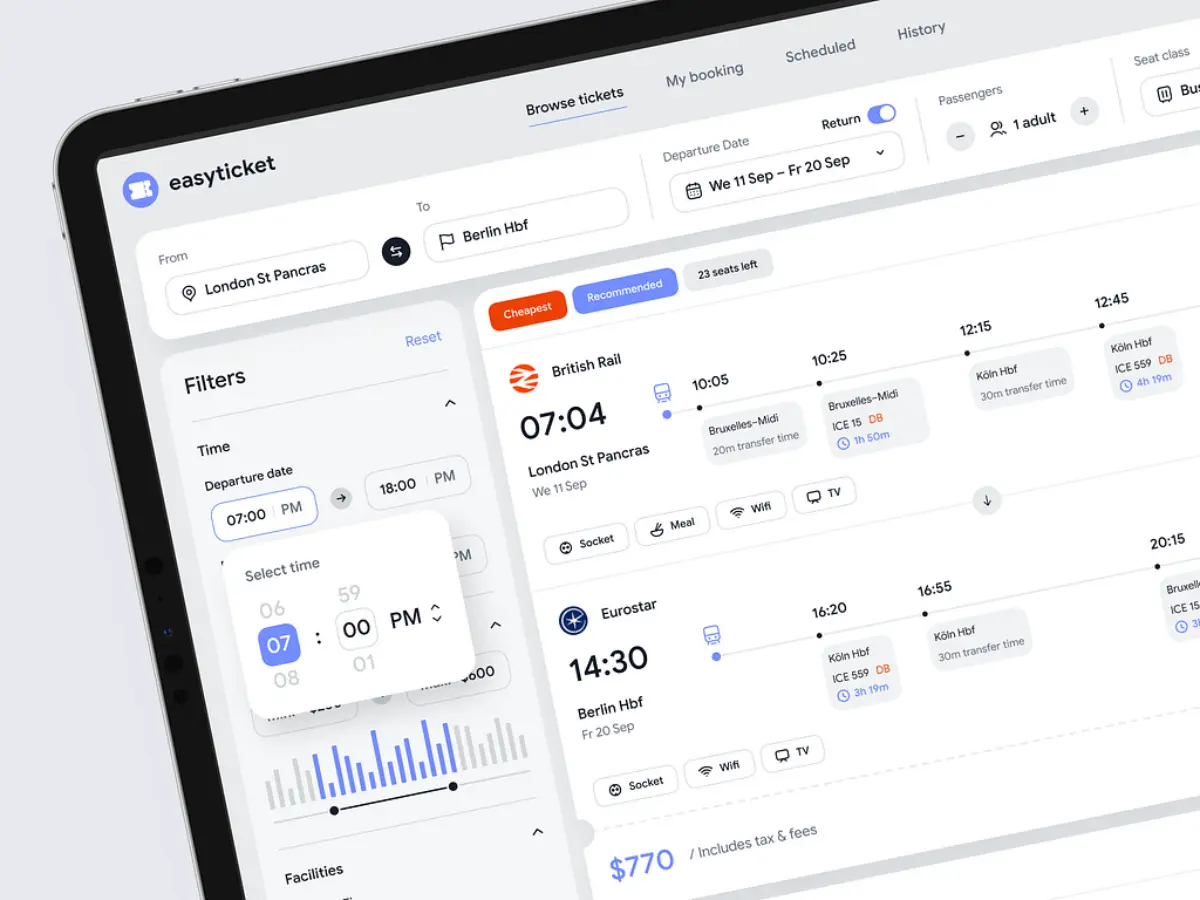Building Success with the Right Software Development Partner
- TECHVIFY Team
- December 16, 2024
- Knowledge, Guides
- 0 Comments
Did you know that IT outsourcing now dominates 37% of the global IT services market? According to Statista, the sector reached an impressive $412 billion in 2022 and is expected to climb to $541.10 billion by 2024. Fast forward to 2029, and it’s projected to hit a staggering $812.70 billion, growing at an annual rate of 8.48%. These numbers don’t just highlight the popularity of outsourcing—they emphasize its role as a game-changer for businesses worldwide.
With such rapid growth, businesses are increasingly relying on outsourcing to tackle complex challenges and accelerate innovation. But here’s the catch: choosing the right software development partner can feel like navigating a maze. With countless options out there, how do you ensure you’re making the right choice?
In this guide, we’ll walk you through actionable tips to help you partner with a software development team that delivers high-quality solutions and fuels your business growth.
I. Start with “Why”: Your First Thing in Finding the Perfect Software Development Partner
Before you start scouting for a software development partner, take a step back and ask yourself one simple but essential question: Why do I need a software development partner in the first place?
Your answer will serve as the foundation for finding the right fit and will help you narrow down your options. Let’s break it down:
- Do you need someone to handle front-end, back-end, or both?
- Are you looking for experts who can also take care of project management tasks or business analysis?
- Is your internal IT team stretched too thin to take on another project? Or are they missing specific skills for the software you have in mind?
What you’ll get when working with the right software development partner
Perhaps you’re looking for a dedicated team to take full control of the development process. Or maybe you just need a few developers to fill skill gaps in your existing team. In some cases, you could even be searching for a technical co-founder—a long-term partner who will help you build a product from the ground up while sharing your business vision.
The key here is clarity. Take the time to define your goals, write them down, and assess what you truly need. By doing this, you’ll have a clear sense of direction, making it easier to find a partner who aligns with your objectives.
Remember, choosing a software development partner isn’t just about hiring a team—it’s about finding someone who shares your vision, understands your challenges, and actively contributes to your success. When you start with “why,” you’re already one step closer to making the right choice.
Learn more:
II. Steps to Take Before Choosing a Software Development Partner
Before searching for a software development partner, it’s essential to define three key elements: your project scope, timeline, and budget. Having a clear plan ensures smoother collaboration and sets realistic expectations for both sides.
Define Your Project Scope
Ask yourself: What problem does my app solve, and how will it bring value? Once you’re clear on its purpose, outline your goals, key tasks, and deliverables. Think beyond technical features—consider the logic behind the app’s functionality.
For specialized industries like real estate or telemedicine, you’ll need to provide developers with the necessary context while they focus on building the app’s features. A well-defined scope ensures everyone is aligned from the start.
Set a Realistic Timeline
Establish when you want the project completed and identify milestones to track progress. Keep in mind that timelines depend on complexity—a simple app may only take a few months, while advanced features or regulatory requirements might add more time.
Leave room for flexibility, as delays are common. A clear timeline helps you stay on track and ensures your partner understands your expectations.
Plan Your Budget
Your budget is your guide for smart decision-making. Determine how much you’re willing to invest and consider starting with an MVP (Minimum Viable Product) if resources are tight. This allows you to launch quickly and refine later as funds grow.
If you have more flexibility, you can opt for a full-featured app from the start. Either way, a well-defined budget helps you find partners who align with your financial expectations.
III. How to Find the Perfect Software Development Partner: A 7-Step Guide
Once you’ve defined why you need a software development partner and what you’re looking for, it’s time to dive into the search. But with so many options out there, how do you ensure you’re choosing the right one?
Here’s a step-by-step guide to help you navigate the process and find a software development partner that fits your needs perfectly.
Get better results with the perfect software development partner
Step 1: Conduct Thorough Research
A quick Google search might seem like a good place to start, but it’s not always the most effective strategy. While Google will show you top results, not every company listed will suit your unique needs.
So, where should you look instead?
- Review Platforms: Websites like Clutch are invaluable. They provide data-driven reviews and ratings for leading IT outsourcing companies, helping you assess their services, expertise, and reputation.
- Community Forums: Platforms like Quora offer honest opinions, while GitHub and Stack Overflow help you connect with experienced individual developers.
- Freelance Platforms: If you prefer hiring freelancers, websites like Upwork allow you to post jobs or browse candidates. However, working with freelancers can be riskier compared to established companies.
By leveraging these platforms, you can narrow down your options to companies or individuals with the skills and experience you’re after.
Step 2: Check Testimonials
Testimonials are a great way to understand how a company operates and treats its clients. These written or spoken statements from previous clients can provide insights into the company’s reliability, responsiveness, and overall performance.
Look for testimonials on the company’s website or third-party platforms, and pay attention to specific details about successful projects, client satisfaction, and long-term partnerships.
Step 3: Assess Expertise
Not all software development companies are created equal. To find the right partner, you need to ensure they have the expertise required for your industry and project.
- Explore the company’s specialization areas on their website. Do they have experience in your industry (e.g., fintech, healthcare, e-commerce)?
- Check if they understand the challenges of your target audience and can develop features that meet your users’ needs.
The right partner should not only possess technical skills but also be able to align their expertise with your business goals.
Step 4: Explore Case Studies
Case studies are a window into a company’s real-world experience. They showcase how the company has tackled challenges, implemented solutions, and delivered results.
When reviewing case studies, look for answers to these questions:
- What problem did the client face?
- What solution did the development company provide?
- What features were implemented, and what were the overall results?
Detailed case studies will help you understand the company’s approach to problem-solving and whether it aligns with your expectations.
Looking for an Outsourced IT services partner?
TECHVIFY is the best option for you. Book a free consultation for an accurate time and cost estimation for your project.
Step 5: Evaluate the Company’s Culture
A company’s culture can tell you a lot about how they’ll approach your project. Are they collaborative, transparent, and committed to delivering results?
Here’s how to evaluate culture:
- Introduction Calls: Speak with team members (not just sales reps) to get a sense of their professionalism and enthusiasm.
- Office Visits: If possible, visit their office to see how they work.
- Social media: Check their LinkedIn, Facebook, or Instagram accounts to learn more about their values and work environment.
Choose a partner whose culture aligns with your own so you can build a strong, collaborative relationship.
Step 6: Set Up Smooth Communication
Communication is the backbone of any successful partnership. Without clear, transparent communication, your project could face unnecessary roadblocks.
- Ensure the team is fluent in English (or your preferred language) to avoid misunderstandings.
- Discuss communication channels and tools (e.g., Slack, Zoom, email) to ensure regular updates and smooth collaboration.
- Confirm that you’ll have direct access to the development team—not just project managers—so you can stay in the loop.
Good communication ensures everyone is aligned and reduces the risk of errors or delays.
Step 7: Interview the Developers
While the sales team might impress you with their pitch, the developers will bring your project to life. That’s why interviewing the development team is crucial.
Ask questions about their technical expertise, previous projects, and problem-solving approaches. This will help you determine if they have the skills and creativity to deliver high-quality work.
By meeting the developers directly, you’ll get a clearer picture of their capabilities and how well they understand your project’s requirements.
IV. Tips to Build a Trusted Software Development Partnership
Even after narrowing down your options, it’s normal to feel a bit uncertain about choosing a software development partner. The truth is, you won’t know if they’re the right fit until you start working together. But to help ease your concerns, here are some practical tips to build a trusted partnership and move forward with confidence.
Custom software development partners
When working with clients, we often hear three key questions:
- How do I check if the company matches my needs?
- How do I negotiate the price?
- How will my sensitive data and intellectual property be protected?
Let’s address these concerns step-by-step and explore how you can build trust from day one.
1. Prepare the Right Questions
The first step to building a solid partnership is communication. Take the time to prepare a list of questions that will help you understand your prospective partner’s processes, capabilities, and expectations.
Here are a few to get you started:
- What does your process for starting a new project look like?
- How soon can you begin?
- How will communication work between our teams?
- What kind of involvement do you expect from us during the process?
- How do you handle legal and payment matters (e.g., contracts, payment terms)?
- What steps will follow if we decide to move forward?
Asking detailed questions early in the process will give you clarity and help you make an informed decision. Remember, no question is too small transparency is key to building trust.
More outsourced IT services articles:
2. Put Value Over Price
While price is an important factor, it shouldn’t be the sole focus of your decision. Choosing the cheapest option may seem tempting, but it often comes at the expense of quality. Poorly developed software can cost you more in the long run if it requires extensive rewriting or fails to meet your needs.
Instead, focus on the value the partner can deliver. What’s their track record? Do they have the expertise to handle your specific project? Think of the cost as an investment in quality and reliability.
If budget constraints are a concern, consider ways to optimize costs without sacrificing quality. For example, starting with an MVP (Minimum Viable Product) can reduce initial expenses while allowing you to scale later.
3. Assess Security and Data Protection
Trust starts with knowing your data and ideas are safe. Beyond technical expertise, your partner should have robust security measures to protect your project.
Here’s what to look for:
- Data Security: Ask how they protect your data during development and storage. Do they follow best practices for encryption, access control, and secure systems?
- Intellectual Property Ownership: Make sure ownership of the code and other deliverables is clearly defined in the contract.
- Non-Disclosure Agreements (NDAs): Check if they use NDAs to safeguard your confidential information throughout the project.
Most companies outline their security policies on their websites, but it’s always better to ask directly. Use their “Contact Us” form or set up a meeting to discuss these concerns. A trustworthy partner will have clear answers and won’t hesitate to explain their policies.
Conclusion
Choosing the right software development partner is key to overcoming challenges and driving growth. By defining your goals, asking the right questions, and prioritizing expertise and security, you can set the foundation for a successful collaboration.
At TECHVIFY, we turn your ideas into scalable solutions with expert developers, strong security, and a transparent process. Ready to partner with experts who prioritize your success? Contact TECHVIFY today for a free consultation and let us help you build scalable, secure, and innovative solutions.
TECHVIFY – Global AI & Software Solution Company
From Startups to Industry Leaders: TECHVIFY prioritizes results, not just deliverables. Accelerate your time to market and see ROI early with high-performing teams, AI (including GenAI) Software Solutions, and ODC (Offshore Development Center) services.
- Email: [email protected]
- Phone: (+84)24.77762.666








